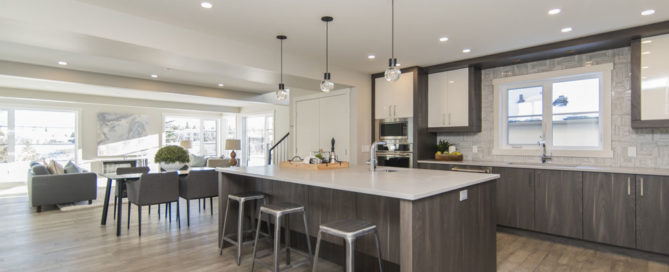F.A.Q
CHECK OUR FREQUENTLY ASKED QUESTIONS
You should check your furnace filter every 2 months and replace it as required. Changing the filter on a regular basis will ensure higher efficiency and increase the life of your furnace.
One reason could be that the humidity is set too high. Try turning it down. Another possibility may be that your ventilation switch is turned on. Check the ventilation switch and turn it off if necessary. If neither solution rectifies the problem and your home is without heat, you may want to call our 24/7 emergency line at (403) 212-6303.
Although control joints will help with cracking in most cases, it is not uncommon for concrete to crack in places other than the control joints. Concrete shrinkage, frost upheaval, and settling can all be culprits. Any micro-cracks can be exacerbated by the expansion and contraction of water and ice due to Alberta’s rapid freeze-thaw cycle. Cracks can also be caused by tree roots under the driveway, or by excessive load-bearing items.
The most frequent cause of a power outage to the kitchen or exterior plugs is the Ground Fault Interrupt (GFI) breaker, typically located beside the breaker panel, has been tripped. This will need to be reset by pressing the reset button.
Although we have taken steps to minimize this, it is still very important to run the bathroom fan longer during extremely cold weather so that the moisture doesn’t freeze in the exhaust line. The sudden rise in temperature associated with a Chinook causes this moisture to melt. You may choose to install a timer on your fan, which greatly improves moisture control while saving energy.
Please review ‘All Weather Windows’ Maintenance Tips on the following page.
We recommend that you wait a full cycle of seasons in order to maximize settlement. We begin our seasonal work in June and run until Fall, weather permitting. Only once you’ve received your grading compliance from the City will you be able to move forward and complete your landscaping.
You will need to contact Canada Post directly (Toll free: 1-800-267-2797) in order to be informed of your community postal depot location. You will be required to go to your postal depot, where they will be able designate your box number and provide you with a key.
The bedroom outlets are on an Arc Fault Circuit Interrupter (AFCI), which can cause the breaker to be tripped. If this has occurred, they will need to be manually reset in the basement on the main electrical panel. Should the issue persist, check your cords.
A plumbing leak, roof leak, natural gas smell, or sewer backup are all considered emergencies. Additionally, you will want to contact our emergency line in the event of a complete shutdown of heat or power in your home.
We have 24-hour emergency line available 7 days a week. In the event of an emergency please contact us at (403) 212-6303.
All issues other than those listed above are considered to be non-emergency issues. A call can be placed to our Service and Warranty line at 403-212-6375. Additionally, we can be contacted by email at service@nuvistahomes.com or service@augustafinehomes.com
This depends upon the developer of the community. If applicable, the developer will provide the tree(s). Depending on whether your grading is complete, your developer may perform a spring or a fall planting. The developer will mail you an information package.
Check the following prior to contacting your service representative:
- Are there any chemicals creating fumes near the water tank?
- If it is wintertime, is venting being obstructed by snow or frost? Either of these circumstances can cause the safety device on the tank to shut it down.
Interior Condensation – Surface Condensation
In many homes, it is a struggle to keep enough moisture inside the home to maintain an acceptable humidity level for the health and comfort of the occupants. Frequently, humidifiers are installed to add moisture to the air, but their use must be controlled or surface condensation problems will often result when outside temperatures are low. Some indications of surface condensation are:
- Frost on door handles and hinges
- Water or ice on windows
- Damp spots on walls and ceiling
- Damp spots on closet walls
- Moisture on light fixtures
- Moisture on water closets
- Moisture on cold water pipes, walls and floors.
Unfortunately, a dry house may indicate a high leakage rate (depending on the amount of moisture added by the homeowner), which can contribute to concealed condensation. In some newer homes, however, air leakage is controlled so well that removing moisture from the house becomes a problem. This problem is exacerbated by the overuse of humidifiers, resulting in condensation on windows, mold growth, or damp spots on ceilings and room-side surfaces of exterior walls.
Because windows do not provide much resistance to heat loss, they are often the coldest component of a building enclosure, and can be an indicator of humidity problems. Because condensation occurs on inside window surfaces whenever the surface temperature falls below the dew point temperature of the room air, window condensation may signal a need to reduce the humidity level in your home.
